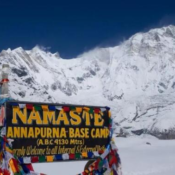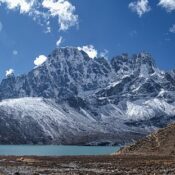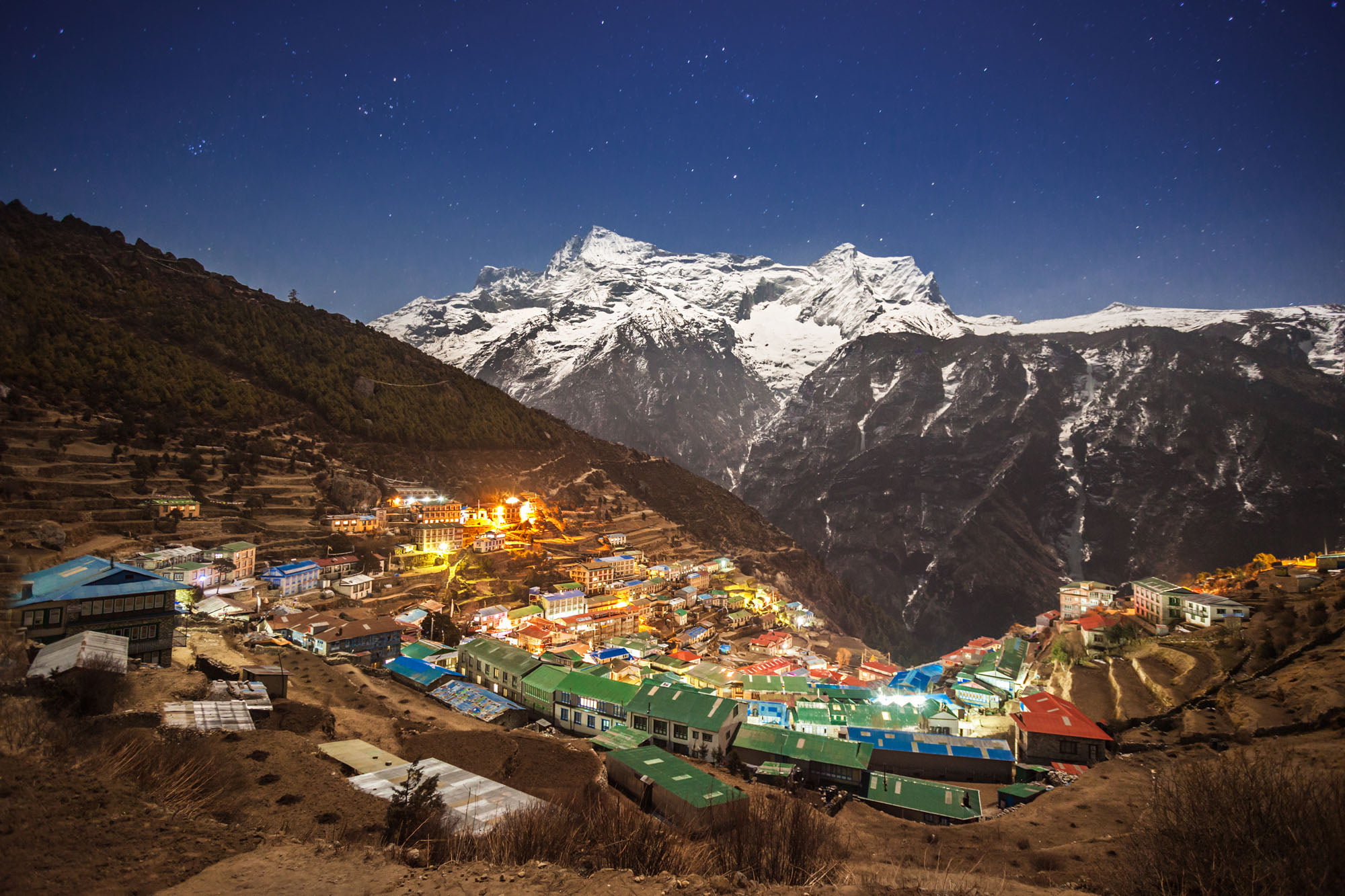Pashupatinath Temple: A Complete Guide to Kathmandu’s Sacred Site

Pashupatinath Temple is one of the most important Hindu temples in the world. It is located on the western bank of one of the holiest rivers the Bagmati in Kathmandu, Nepal. This temple is mostly dedicated to Lord Shiva, who is worshipped as Pasupati, the lord of all creatures. Pashupatinath has expanded its area into 246 hectares and has around 518 small and supporting temples. It is surrounded by nine Devi temples, which also makes it important for Shaktism followers. It has temples like Jay Bagheshowri, Bhuwaneshowri, Batchaleshwori, Raj Rajeshwori, Guhyeshwari, Jhankeshwori, Man Manseshwori, Koteshwori, and Maha Gauri.
This temple doesn't only have significant religion, but it represents a living museum of Nepali culture, art, architecture, and spiritual traditions that came from over 1600 years. As per Nepal Mahatmya, the main statue of the Pashupatinath temple is a swoyambhu, which means it originated itself. It offers a spiritual journey for people visiting this temple with its ritual practices while showing a cycle of life and death in its surroundings. It is one of the important places for Hindus all over the world and also a great place for sadhana.
Table of contents
- Historical Origins and Legends of Pashupatinath
- The Main Temple's Architectural Magnificence
- First Floor Representing Four Yugas
- How Are Sacred Parikrama (Circumambulation) Rituals Performed?
- Brihat Pashupati Parikrama
- Pashupati Kshetra Darshan
- Bhairav Temple near Mitrapark
- Gaurighat Holy Bath & Hanuman Statue
- Kirateshwar Temple:
- Guhyeshwari Temple:
- Gorakhnath Temple:
- Brahma Mandir:
- Thulo Trishul:
- Basuki Nag Temple:
- Bhajan Mandav :
- Kritimukh Bhairav:
- Unmata Bhairav:
- Navagraha Temple:
- Main Pashupatinath Temple:
- How to Properly Visit the Main Shiva Linga at Pashupatinath Temple
- Festivals celebrated in Pashupatinath
Historical Origins and Legends of Pashupatinath
The origins of Pashupatinath Temple are deeply connected with the connection of divine intervention and human devotion, making it more connected to its followers. There are different mythological origins for this temple, which show how this temple got into existence as per myths and legends.
Antelope & Lord Shiva
As per one of the myths, Lord Shiva came to earth to roam around in the form of an antelope. While roaming around the bank of the Bagmati River, he got fascinated by the beauty of the river and surroundings. Lord Shiva plans to stay there for some time to admire the beauty of the surroundings and the calmness of the river. Heaven got silent as Shiva stayed on earth, and the deities got worried, so they asked Lord Vishnu to see where Lord Shiva is. Lord Vishnu used his divine power and got to see Lord Shiva living in Kathmandu in the form of an antelope.
All of the deities and Lord Vishnu visited the bank of the Bagmati River to bring back Lord Shiva to heaven. When Antelope Lord Shiva saw Vishnu, he tried to run away. . In an attempt to stop him, Vishnu grabbed the horn of the antelope, and as he grabbed the horn, it broke and dropped to the ground. Those horns got buried as the time passed but were eventually discovered by a herdsman. One of the cow used to pour milk in a particular spot in the land; later, when he excavated, he found a glowing Shiva lingam of Pashupatinath. The shiva linga we could see right now is from Jay Singh Rambardan, who is minister of Jayasthiti Malla.
Pandava & Mighty Bull
Another legend related to Pashupatinath is connected to Mahabharat. After the Kurukshetra war, the Pandava brothers were Yudhishthira, Bhima, Arjuna, Nakula and Sahadeva. They were burdened by the guilt of Gotra hatya (they killed Kauravas, who are their cousins in war), Brahmanahatya (they killed gurus and priests like Dronacharya), and their violence against the warriors and animals. The Pandav brothers asked Krishna for advice, and he advised them to meet Lord Shiva. The Pandav traveled to Varanasi, Lord Shiva's favorite place, but Shiva was unwilling to meet them. Lord Shiva took the appearance of a mighty bull and ran to the Garhwal Himalayas.
He hid in the cattles in Guptakashi so that the Pandavas couldn't find him. The strongest of the brothers, Bhima, attempted to capture the divine bull—Shiva disguised—when the Pandavas pursued it into the Himalayas. He did this by standing atop two mountains to prevent it from escaping and then using his tremendous strength to grab its tail and hind legs. Shiva's bull form started to blend into the ground as Bhima clung to it. At five sacred locations, the hump remained at Kedarnath (Uttarakhand), the arms appeared at Tungnath, the face appeared at Rudranath, the stomach and navel emerged at Madhyamaheshwar, and the hair surfaced at Kalpeshwar. Together, these elements formed the Panch Kedar temples. The bull's head reappearing farther east at Pashupatinath in Nepal's Kathmandu Valley was the most notable manifestation.
Bramha V/s Vishnu
One of the legends is related to Bramha and Vishnu; once Bramha and Vishnu fought about who is supreme. They got blinded by the ego of power, which turned it into a fight between them. They couldn't decide who was powerful, so they decided to ask Lord Shiva to make them decide it. Lord Shiva showed his Jyotirlinga form and told Vishnu to find the base of the shiva linga and Brahma to find the tip of the shiva linga. Bishnu took the appearance of Varaha, and Bramha rode a swan. Both of them tried to get to the tip and base of the Jyotirlinga, but it started getting infinite.
Brahma thought of an idea as he met a ketaki flower on the way and asked it to lie to Lord Shiva that he found the tip of the Shiva linga. Bramha told Shiva that he has found the tip of the Shiva linga, but Bishnu said he couldn't find a base of it and praised the lord Shiva for being so powerful. Lord Shiva knew Brahma was lying, so he cursed him that he wouldn't be widely worshipped, which is why Brahma has very few temples. Brahma and Vishnu thought, What will we do with those infinite Shiva lingas? The whole universe was shaking to hold it. Lord Shiva shrank it down to a small Shiva linga, which was the Pasupati Shiva linga. As the ketaki flower lied to Shiva, it is never offered to Lord Shiva.
The Main Temple's Architectural Magnificence
The main temple of Pashupatinath follows the Nepalese multi-roof style, which is made up of copper, gold, silver, wood, and brick, and it is decorated with beautiful carvings of religious art. It has gold-covered pinnacles at the top, which represent ancient myths. Inside the temple is the Garbhagriha, which is the Sanctum sanctrorum. It has a Chaturmukha (four-faced) Shiva ling with a silver snandroni. Each of the four visible faces represents a different aspect of Shiva.
- West (Sadyojata) – Creator
- North (Vamadeva) – Preserver
- East (Tatpurusha) – Destroyer
- South (Aghora) – Transformer
- A fifth face (Ishana), which cannot be seen, represents the formless divine.
First Floor Representing Four Yugas
The temple's first floor features 24 deities (6 in each direction) representing the four cosmic ages:
The Main temple first flood has 24 deities craved in its roof which representes the four yuga like Satya yuga , Dwapar yuga , Treta yug
North (Uttar) - Satya Yuga:
- Brahma
- Vishnu
- Shiva
- Parvati
- Ganesh
- Kumar (Kartikeya)
South (Dakshin) - Dwapara Yuga:
- Yudhisthir
- Bhim
- Arjun
- Nakul
- Sahadev
- Draupadi
West (Pashim) - Treta Yuga:
- Ram
- Laxman
- Sita
- Bharat
- Satrughan
- Hanuman
East (Purba) - Kali Yuga:
- Krishna
- Balaram
- Rukmani
- Satyabhama
- Vishwakarma
- Maya Danav
How Are Sacred Parikrama (Circumambulation) Rituals Performed?

Generally people visit Pashupatinath during different festivals like Shivaratri, Teej, Shrawan, etc. They visit different temples that surround Pashupatinath , but there is a systematic way to do parikarama. Here is how to do those parikramas:
Brihat Pashupati Parikrama
This is one of the biggest parikramas that could be done, which includes different temples that need to be visited before visiting Pashupatinath Temple.
Visit All 64 Shiva Lingas: 64 Shiva lingas are scattered all over Nepal, which holds bigger cultural and religious significance. The noticeable Shiva linga included in the 64 Shiva linga can be found in Muktinath Temple, Lumbini, Bhairabsthan, Shivapuri Nagarjun National Park, Rudreshwar, Kailashnath Temple, Gosaikunda, Pasupatinath, etc.
Conclude at Rudra Gadeshwar Linga: The Barihat Pasupati parikrama concludes with visiting the Rudra Gadeshwar linga near the Pashupatinath main temple. It is one of the biggest parikramas that Shiva devotees can do to get blessings from Lord Shiva.
Pashupati Kshetra Darshan
It is one of the sacred darshan processes where devotees visit sites near the Pasupati area. It is a spiritual journey that a devotee can perform by visiting different temples in the Pasupati area.
Bhairav Temple near Mitrapark
Devotees can start with visiting Bhairav Temple near the Mitra Park. Bhairav is a powerful manifestation of Lord Shiva associated with destruction, time, and protection.
Gaurighat Holy Bath & Hanuman Statue
After visiting Bhairav Temple, devotees can take a holy bath in the Bagmati River in Gaurighat. They can then visit the Hanuman Statue near the Gaurighat.
Kirateshwar Temple:
Kirateshwar Temple is located in between Pashupatinath and Guhyeshwari. It is built to honor Lord Shiva Kirtateswor (Hunter). It has a very unique shiva linga, which is tilted and appears different from different angles. According to mythology, it is related to the Mahabharata, where Arjuna prayed to Lord Shiva before the Kurukshetra war.
Guhyeshwari Temple:
It is one of the Shakti Peeths where Sati's knees fell down and Guhyeshwor Mahadev originated. It is an important site to be visited during Swosthani Barta.
Gorakhnath Temple:
Gorkhnath is one of the two disciples of Machendranath. It is a beautiful spot for meditations with a beautiful view.
Brahma Mandir:
It is one of the temples of Brahma located in the Jay Bagyeshowri area of Pasupatinath. It is one of the few temples of Brahma, as there are limited temples of Brahma, as Shiva cursed him for lying.
Thulo Trishul:
It is a massive trishul supposed to be installed during the Lichhivi period. It is made up of stone, or we can call it a stone pillar carved with a trishul, a Shiva weapon.
Basuki Nag Temple:
It is a temple dedicated to the king of Naga, a serpent deity. It is located in the northeast courtyard, built in the Nepali muti roof style.
Bhajan Mandav:
Devotees can enjoy bhajans of deities and enjoy the religious music while feeling the music. It also provides musical therapy to devotees.
Kritimukh Bhairav:
Kritimukh Bhairav is a temple of deities associated with destruction and guardian deities. It is one of the representations of Lord Shiva. It is located on the western side of Pasupatinath.
Unmata Bhairav:
It is one of Lord Shiva's eight forms of Bhairava, which is known for destruction, protection, and spiritual power.
Navagraha Temple:
We can pray to nine planetary deities, as in Hinduism it is believed that human life depends on Navagraha.
Main Pashupatinath Temple:
After visiting all the temples near Pasupati, devotees should visit Pasupatinath Temple while worshipping chaturmukh shiva linga. There is a spiritual process to see the chaturmukhi shiva linga.
How to Properly Visit the Main Shiva Linga at Pashupatinath Temple
We should begin our worship from the south side (दक्षिण), which signifies Aghora Shiva, symbolizing protection and fearlessness. After south we will see the east (पूर्व) face, which is known as Tatpurusha and symbolizes wisdom and enlightenment. We will then go to the west (पश्चिम) from the south. West is a Sadyojata, which represents prosperity and family harmony. At last we will see North (उत्तर) partially, which is Vamadeva; it represents health and nourishment.
Festivals celebrated in Pashupatinath
Maha Shivaratri (Great Night of Shiva)
Maha Shivaratri is one of the biggest festivals related to Lord Shiva and a festival that is celebrated in Pashupatinath. This festival is celebrated in February or March with grandness while honoring Lord Shiva's cosmic dance and marriage to Goddess Mata Parvati. The devotees who come from all over the world do the nightlong vigil while chanting and singing Shiva songs and mantras. The main shiva linga of the Pasupati premises is bathed with sacred substances like milk, honey, and ghee. Devotees also consume cannabis as a ritual, as prasad from Lord Shiva. . Sadhu from India and Nepal gather in Pasupati premises and do meditation. All the devotees of Lord Shiva do bonfires, which symbolize the dispelling of darkness. Approximately Pashupatinath get around 400000 devotees from Nepal and India
Haritalika Teej
Haritalika Teej is a three-day Hindu festival that is primarily celebrated by women in Nepal and also by women from some parts of India. It occurs in the month of August, dedicated to the goddess Parvati and Lord Shiva. This festival is celebrated by women to pray to Lord Shiva for the well-being of their husbands and bring out prosperity for their families. Teej is celebrated by feasting, fasting, and doing celebrations like dancing and singing while wearing red attire and bangles. On the last day of this festival women offer food, money, and various offerings. They also bathe with red mud while also brushing their teeth with datiwan, which is believed to purify your soul and body.
Bala Chaturdashi
Bala Chaturdashi is one of the festivals of Hinduism, which is celebrated in the premises of Pashupatinathto honor the deceased. In this festival devotees keep all-night vigil while lighting lamps and scattering seven types of seeds known as Satbij, like barley, wheat, black sesame, green gram, etc. The satbij are scattered around Sleshmantak Forest and along the Bagmagi River. It is believed to bring peace to those departed souls. Bala Chaturdashi is also known as Satbiu Charney Din.
Shrawan Sombar
Monday is an auspicious day in the month of Shrawan, when women take fasts to honor Lord Shiva. This fast is believed to provide blessings, enhance marital harmony, and help to develop spiritual growth. Every Monday devotees do fasting and puja while also avoiding salt, onion, garlic, etc. In this month of Shrawan, women wear green bangles and saris and put henna on their hands.
Pasupatinath is a powerful symbol of the spiritual and cultural heart of Kathmandu City. The ancient rituals and traditions help to provide a deep well of inspiration while fueling the sense of wonder. Our Kathmandu city tour is crafted to let you explore the best of Kathmandu city in a day tour. When you explore its surroundings, you will have a spiritual journey through Nepal's culture and tradition. Pasupatinath is also one of the examples where we can see architectural miracles. If you want to explore the best of Kathmandu, feel free to WhatsApp us or email us.







